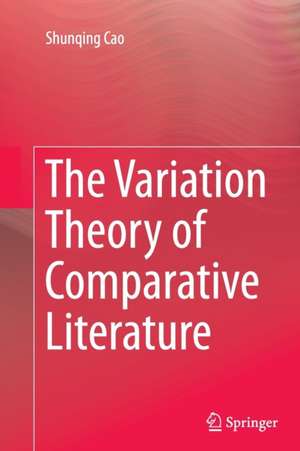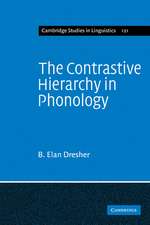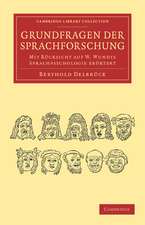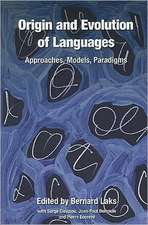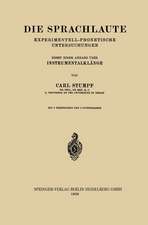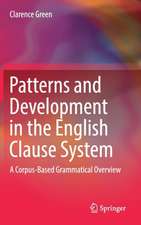The Variation Theory of Comparative Literature
Autor Shunqing Caoen Limba Engleză Paperback – 3 sep 2016
| Toate formatele și edițiile | Preț | Express |
|---|---|---|
| Paperback (1) | 387.96 lei 6-8 săpt. | |
| Springer Berlin, Heidelberg – 3 sep 2016 | 387.96 lei 6-8 săpt. | |
| Hardback (1) | 395.25 lei 6-8 săpt. | |
| Springer Berlin, Heidelberg – 4 apr 2014 | 395.25 lei 6-8 săpt. |
Preț: 387.96 lei
Nou
Puncte Express: 582
Preț estimativ în valută:
74.24€ • 77.04$ • 62.06£
74.24€ • 77.04$ • 62.06£
Carte tipărită la comandă
Livrare economică 17-31 martie
Preluare comenzi: 021 569.72.76
Specificații
ISBN-13: 9783662523339
ISBN-10: 3662523337
Pagini: 290
Ilustrații: XXXVIII, 252 p.
Dimensiuni: 155 x 235 x 15 mm
Greutate: 0.41 kg
Ediția:Softcover reprint of the original 1st ed. 2013
Editura: Springer Berlin, Heidelberg
Colecția Springer
Locul publicării:Berlin, Heidelberg, Germany
ISBN-10: 3662523337
Pagini: 290
Ilustrații: XXXVIII, 252 p.
Dimensiuni: 155 x 235 x 15 mm
Greutate: 0.41 kg
Ediția:Softcover reprint of the original 1st ed. 2013
Editura: Springer Berlin, Heidelberg
Colecția Springer
Locul publicării:Berlin, Heidelberg, Germany
Cuprins
Introduction The Variation Theory: An Important Breakthrough of Comparative Literature.- Chapter I Major Contributions of Influence Study and Its Weaknesses.- ChapterⅡ Major Contributions of Parallel Study and Its Weaknesses.- Chapter Ⅲ The Variation Theory on the Aspect of cross-state.- Chapter V Cross-cultural Variation Theory.- Chapter Ⅵ Cross-civilization Variation Theory.
Textul de pe ultima copertă
Professor Cao Shunqing’s book on The Variation Theory of Comparative Literature, now available in English, is a welcome attempt to break through the linguistic barrier that keeps most comparatists in China enclosed within their own cultural domain. Cao’s book aims to open a dialogue with scholars around the world.
The Variation Theory is a response to the one-sided emphasis on influence studies by the former “French school” as well as to the American focus on aesthetic interpretation, inspired by New Criticism, which regrettably ignored literature in non-European languages. Our Chinese colleagues are right in seeing the restrictions of former comparative studies and are fully entitled to rectify those shortcomings. However, it is important to view the rise and interaction of the various schools that Cao describes in their historical context.
by Douwe W. Fokkema
Former President of the International Comparative Literature Association
Emeritus Professor of Comparative Literature, Utrecht University, The Netherlands
The Variation Theory is a response to the one-sided emphasis on influence studies by the former “French school” as well as to the American focus on aesthetic interpretation, inspired by New Criticism, which regrettably ignored literature in non-European languages. Our Chinese colleagues are right in seeing the restrictions of former comparative studies and are fully entitled to rectify those shortcomings. However, it is important to view the rise and interaction of the various schools that Cao describes in their historical context.
by Douwe W. Fokkema
Former President of the International Comparative Literature Association
Emeritus Professor of Comparative Literature, Utrecht University, The Netherlands
Caracteristici
Offers a new perspective and new methods for comparative literature studies Opens a new stage in the course of the development of comparative theory by focusing on heterogeneity and variation Highlights the differences between various civilizations, as well as promotes the dialogues and exchanges of civilizations Includes supplementary material: sn.pub/extras
